by Mary Hrbacek
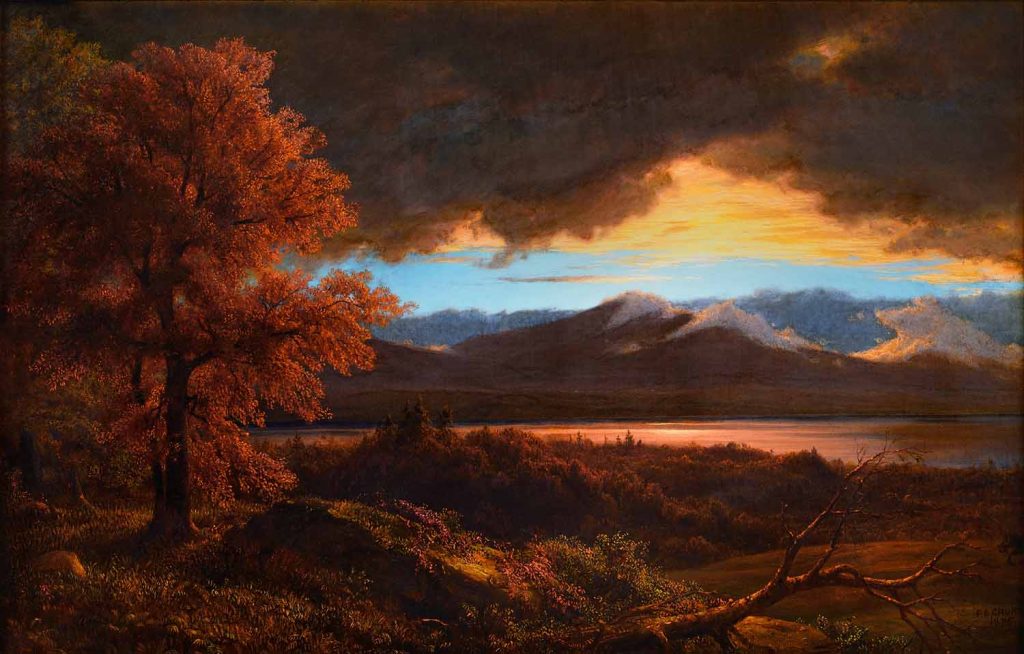
“Church and Rothko: Sublime,” an exhibition of twenty-seven oil paintings on canvas, brings into focus, in the context of the ‘Sublime,’ the similarities and divergences of two deeply contrasting artists who extended the art of painting to suit their overriding visions, separated by a span of nearly 100 years.
Michael Altman Fine Art and Christopher Rothko collaborated with Robert Mnuchin and the Mnuchin team to present this respectful, comprehensive and deeply appreciative journey through the pictorial language of a 19th and a 20th Century master, who succeeded in transmuting their art to the level of the emotional and psychological sublime, through purely visual means. The show adheres to an expanded, unconventional definition of the ‘Sublime,’ which includes not only the sense of the majestic but also its frightening, perilous dark side. There are ten abstract Rothko works and seventeen Frederic Church oil paintings on view.
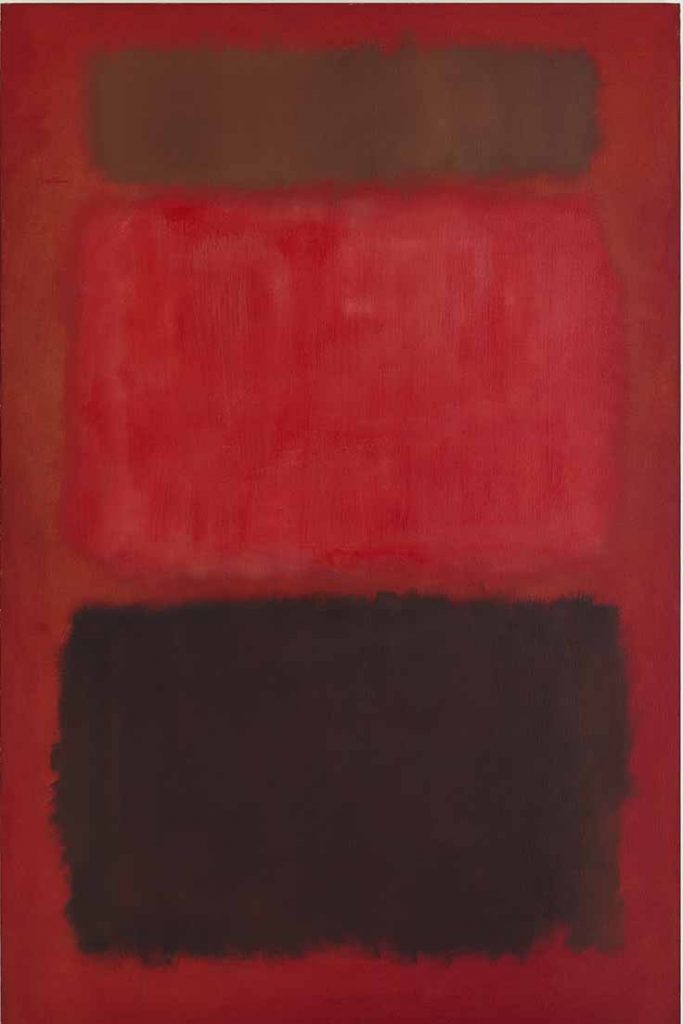
The handsome, risk-taking installation presents Church’s portrayals of concrete outer reality contrasted with the ephemeral inner reality of Rothko’s images, in juxtapositions that compel the viewer to reorient mental and visual comprehension with the aid of color as the harmonious interconnecting link. The wide differences in the underlying structures of the two artists’ works reveal the extent to which humans have transformed society, culture and art in a span of less than 100 years. The challenges of the exhibit offer an expanded experience that has the potential to broaden the viewer’s visual scope. The traditional toned walls which reflect Church’s era, work to his advantage, while Rothko’s dark works are sometimes subsumed by their gray surroundings; white walls might serve his radical images more favorably.
American born Frederic Edwin Church (1826-1900) brilliantly observes and records the particulars of the skies, clouds, mountains, trees, flowers, rivers and the sea that fall before his wide grasp of meaningful detail. His inspired recreation of light as it morphs from sunrise into daylight, and into the atmospheric effects that illuminate clouds at sunset, instills the viewer with feelings of revelation and discovery. His encyclopedic panoramic landscape views are emotionally charged by his dramatic use of pure warm hues.
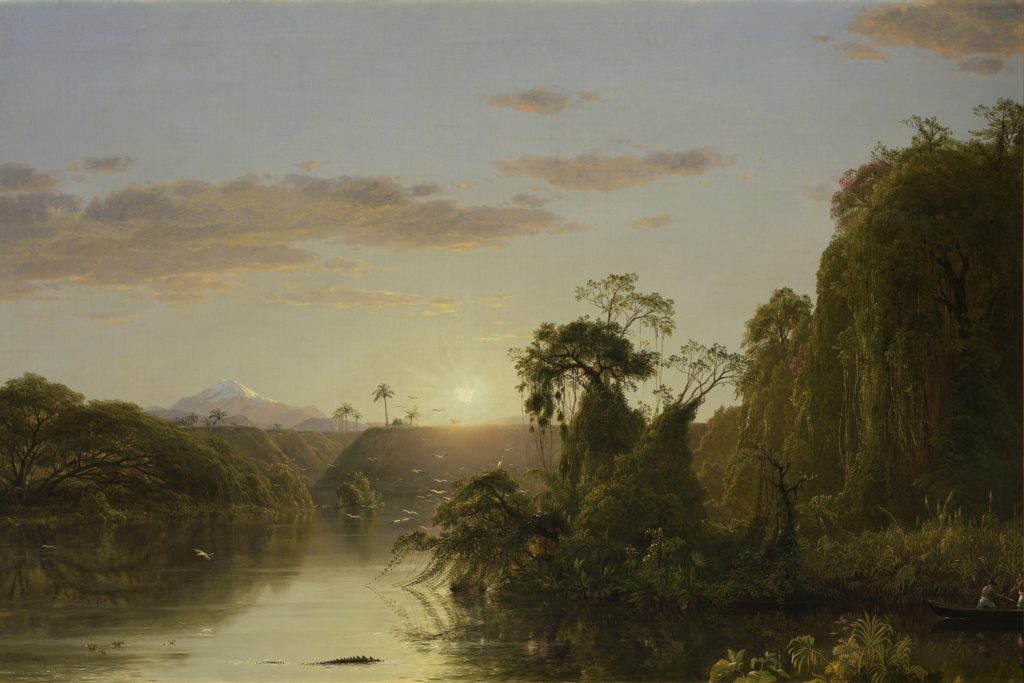
Church traveled extensively, painting in plain air, but he also worked in his studio at his home Olana in New York State. He was a recognized master of the Hudson River School of landscape artists. Church was intrigued by incidences of human courage in scenes of ships trapped by icebergs, or while in danger of sinking at sea. He carried his vision to tropical landscapes that speak of fantasy and ecstasy through their sublime auras, their intricately ornate foliage and plant-forms, luminous mirror-like rivers and lakes, and divinely illuminating light. Church’s sensitivity to the changing hues which evolve in sunsets provides a rich evocative subject he explores in many of his works. The painter’s use of saturated red, displayed in “Marine Sunset (The Black Sea),” 1881-1882, seems to hint at a prescient apocalyptic vision of the sun setting on civilization as it descends into the netherworld, a harbinger of the Atomic Age that predates the devastating human and environmental global crisis to come in the next century. There are few people on view in these abundant tableaux. Fortunately, he took the opportunity to record the beauties and subtleties, the dramas and innuendos of our deteriorating Earth.
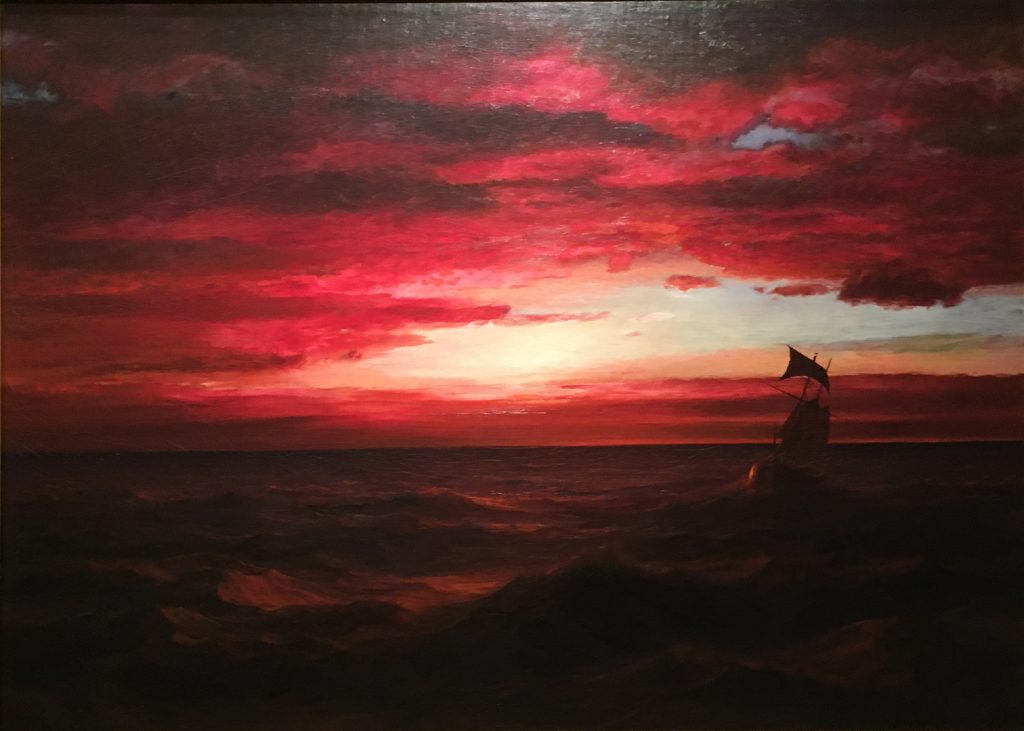
Church’s painting “Twilight in the Wilderness,” punctuated by deep cadmium red hues, perhaps expresses his unconscious awareness that traditional beliefs about natural life were waning. Darwin’s “The Origin of Species,” which appeared in the end of the 1850s, weakened the belief in the existence of the spiritual in nature. Church’s cognizance of the unprecedented carnage of the American Civil War also played a role in some of his apocalyptic landscape visions that portray nature on the brink, at its most turbulent.
The ‘Sublime’ is an emotionally charged term that conjures feelings of wonder and amazement incited by an awareness of God’s providence in the majesty of our abundant natural world. The dictionary defines ‘sublime’ as an adjective that indicates grandeur, excellence, or great beauty inspiring admiration or awe. In Edmund Burke’s book, “A Philosophic Enquiry into the Origins of the Sublime and the Beautiful,” (1757), Burke extends the definition of the ‘sublime’ to include opposing forces, defined as “compelling and destructive, provoking a fear of death, and vastness, infinity and magnificence. It evokes God’s creation of Satan, and its polar opposite, the Beautiful, as well formed and aesthetically pleasing….” In the context of this exhibition, Burke’s definition, which references negatives such as evil and the fear of death, makes sense of the contrast of Rothko’s dark memorial paintings with Church’s bright yellow, orange and cadmium red pieces.
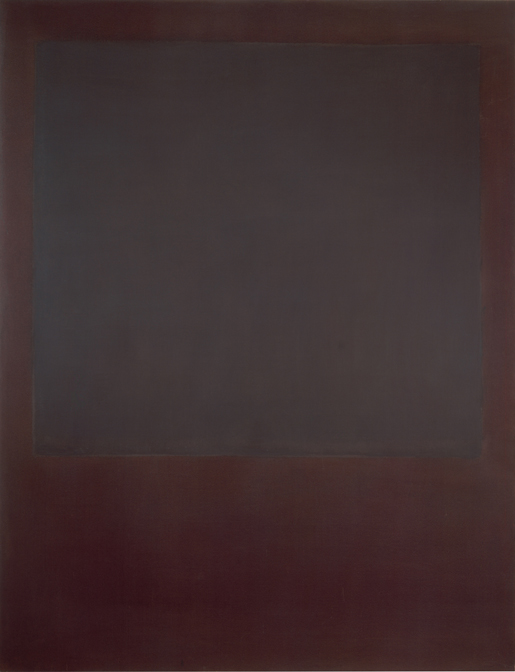
Courtesy of Mnuchin Gallery, New York
Mark Rothko was born in Dvinsk, Russia (1903-1970) and came to the US with his family in 1913. He began painting in 1926; and developed his abstract signature vision around 1947, shortly after the end of World War II. Rothko’s paintings comprise several framed, stacked color fields with harmonious atmospheric layers that shift hues from one rectangle to the next, to establish auras of calm and moods of serenity. Many of his works achieve a sense of the transcendent sublime in a level of intensity that syncs with Church’s landscapes, especially through the means of atmospheric color and ethereal moods, which link his enveloping non-objective oeuvre to the tableaux of Church’s brilliant evanescent skies. Rothko’s formats can be said, in an imaginative leap, to make subliminal suggestions that parallel landscape art. He favors a vertical structure that mirrors the upward sweep of trees, he uses wide rectangular planes reminiscent of the expanse of meadows, and makes a stack of fields that form horizon lines, with a sliver of sky above. His piece entitled “No. 1” (1949) is a transition work displaying remnants of earlier figurative efforts, combined within the format of his stacked rectangles, that speak to Church’s representational oeuvre.
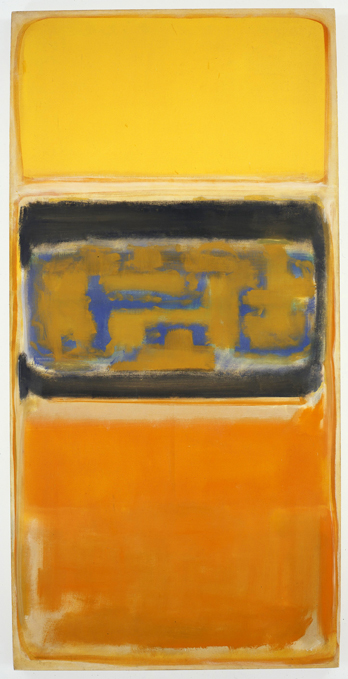
Rothko dispenses with all overt recognizable forms to achieve a direct psychological impact that bridges the core of viewer’s consciousness. In order to comprehend his art, one must release pre-conceived notions to make space to experience fresh emotions and conceptual content that is stimulated by the pure pigment on canvas. “No. 5 (Untitled)” (1964) uniquely resonates with a distinct sensation of the dark sublime. Rothko attempts to align the viewer with a modern zeitgeist, in a connection with unadulterated states of pure being. He was perhaps influenced by Buddhism or by meditation, as his subtle pictures come into more lucid focus with concentration.
After WW II with the experiences of the most heinous crimes ever committed by humanity, it became impossible to trust in a human capacity for evolved states of moral and spiritual being. Moreover, due to the direct onset of the Atomic Age, the world and humanity became equally vulnerable to instant annihilation. Rothko may well have factored these perceptions into his new postwar painterly efforts.
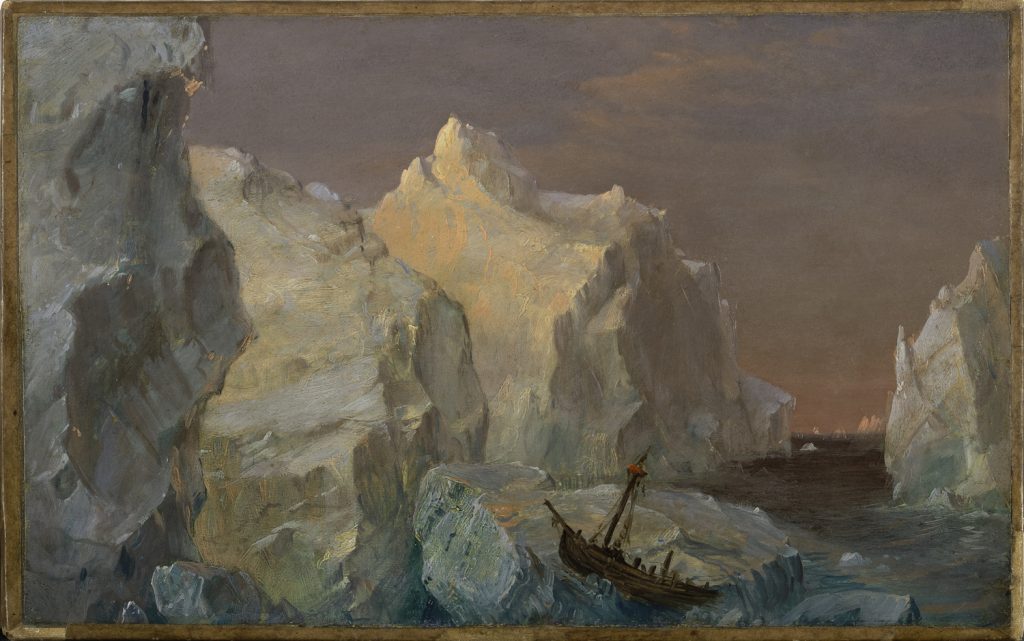
The two artists, working almost 100 years apart, demonstrate beautifully the eras in which they established and developed their visions. While the human impact on nature was becoming more apparent, the 19th Century still retained a sense of hope in the future, and a shaky reverence in the present. Rothko’s 20th Century vision seeks to engage the core of human awareness, separated from nature, which could no longer be referenced as a constant to be experienced with the joy and trust in the future. His is a vision of the timeless and eternal ‘Now,’ which potentially imbues the spirit with a peace that is isolated from an ephemeral world. Rothko’s works present fields which enable viewers to explore their moods and states of mind, with each painting.The absence of traditional pictorial space in Rothko’s art makes at first glimpse a challenging chasm between the two oeuvres. But the notion of linking the works through both color equivalents and the expanded concept of the Sublime, creates an almost playful, experimental arena that accentuates the divergences and similarities of the art of the 20th and 19th Centuries. Church’s “Marine Sunset (The Black Sea)” and Rothko’s “Brown’s and Black’s in Reds” (1968) epitomize the intent here of the comparison of the ‘dark’ side of the Sublime. Whether one senses that the works enhance one another, or whether they distract from their intended meanings, depends on the viewer’s depth of commitment to seeing art from an expansive, inventive viewpoint.
